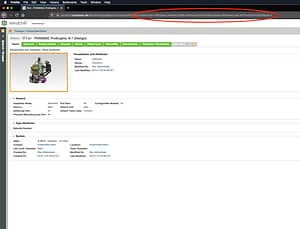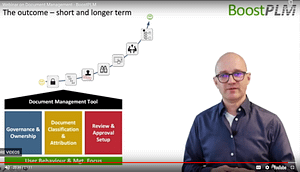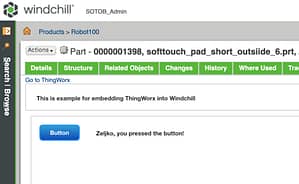This is a guest blog regarding Virtual Engineering Desktop post by Annette Munkholt Wätjen, VP Marketing, Lean-On A/S. Connect on Linkedin
Follow Lean-On on Linkedin or Twitter
Boosting the collaboration and exchange of information between Engineering and Operations through simple, agile and non-complex systems has during 2020 become even more important than ever before.
Employees at every level have to buy-in and adapt to new systems and chance projects – and results have to be clear for everyone. Hence, chance projects need to leave a better outcome for Engineering and Operations IT users, than they experienced before the chance.
With that I would like to highlight a few dynamic mechanisms that we need to pay attention to in the coming years, for that to happen.
The Hybrid Workspace and Workforce – ‘The Anywhere plus Office Hybrid’
With 2021 IDC foresees a next normal that will look different from the pre-pandemic normal. A hybrid workspace is materializing, with some employees reporting to the office, others working from home, and a significant complement working both at home and at the office. Again, this development carries implications for the network and application infrastructure that supports secure application delivery.
The Digital Disconnect
When we talk about the digital disconnect, it describes the gap between how business leaders and employees perceive the future of work.
According to a Citrix study on the Future of Work in 2035, almost three quarters (73%) of business leaders believe that technology and AI will make workers at least twice as productive by 2035, only 39% of employees share this vision. And while few business leaders believe that permanent employees will be rare by 2035 (just 19%), this is the belief of the majority of employees (60%).
The working world foreseen by employees, is very different than the world anticipated by business leaders. In a hybrid workforce, alignment between leaders and employees, happens to a great extent through well structured workflows and systems.
A Focus on Outcome: Business Value and Agility
In a hybrid workforce we are making a shift, to now focus on results and outcomes, as you no longer have the colleague or manager face-to-face. This means that the organization needs to support:
- A modern workstyle that enables people to work when, where and how they want.
- An improved user experience by providing a unified workspace.
- Improvement of IT efficiency by centralizing workload management, and allowing collaborative administration across application and infrastructure groups.
- Keeping the data within the data center making a world of difference in business agility and time-to-market.
- Mobilizing and centralizing the legacy applications through VDI (virtual desktop infrastructure), which are often the business-critical applications of the organization.
- Centralizing and virtualizing the resource intensive tasks and applications: CAD, simulations, AI, data mining, DevOps and more – also through VDI
Accelerated Digital Transformation of the Workplace
Covid-19 has accelerated the digital transformation of the workplace. Automation projects will improve effectiveness. As computing power continues to be more affordable and the cloud enables access to this computing power as well as software and frameworks, more and more companies will be able to benefit from AI. All this will be used for escalating different ways of digital transformation post Covid-19: Changed business models, advancing the use of data to discover strategies, optimize operations, managing risk etc.
Transformation projects will now be aligned and designed for the hybrid workforce. Agility and effective workflows are therefore key in those digital transformations more so than before, creating more value for the business and its customers in a hybrid world.
Reimagining Operational Excellence
The simpler, systems can be integrated, enabling all departments in a corporation to collaborate in efficient workflows, the more productive the hybrid workforce will be. For one of Lean-On’s customers, workspace mobility, centralization and operational excellence were key drivers for realizing growth strategies. New knowledge workers can now be onboarded within a few hours, no matter the location, from Slovakia to India. 42 high-end engineering applications from graphic intensive Autodesk Inventor and PDMS to compute intensive HPC applications such as Rohr2 and Ansys Fluent are running on one high-performance VDI cloud platform today.
Conclusion – The Game Changer in the Hybrid Workforce: A High-Performance VDI Cloud Fabric
So what have we learnt taking these 5 dynamic factors into account? In IT, you are may tempted to compare an older VDI on-prem infrastructure with performance in a modern VDI cloud fabric, but the fact is that the local VDI infrastructure was static, and without systematic maintenance or the ability to scale, it can no longer follow suit in a hybrid world. Thus, the only meaningful comparison in terms of performance in our VDI Cloud, is the physical PC performance. And here the high-performance virtual desktop wins, with the ability to use all the server and storage power behind it, and really boost performance of engineering applications for CAD, HPC and AI with integrations into ERP and more. It also wins as you are able to embrace the old legacy applications in the solution, which we all know are very business critical.
You only need to establish the configuration and profile of the virtual desktop, and you can work anywhere, on any device, with any application for the above tasks. You no longer think in servers and storage, but in a simple desktop service you need for either the engineer, the architect or the financial controller – in the same simple way you turn on the power. As such a high-performance virtual workspace is for the hybrid workforce 2021 and beyond, working as an enabler for collaboration and efficient workflows between Engineering and Operations, embracing the impact of the 5 dynamic factors described here in my blog.
Read more about high-performance VDI for engineering on www.lean-on.com





